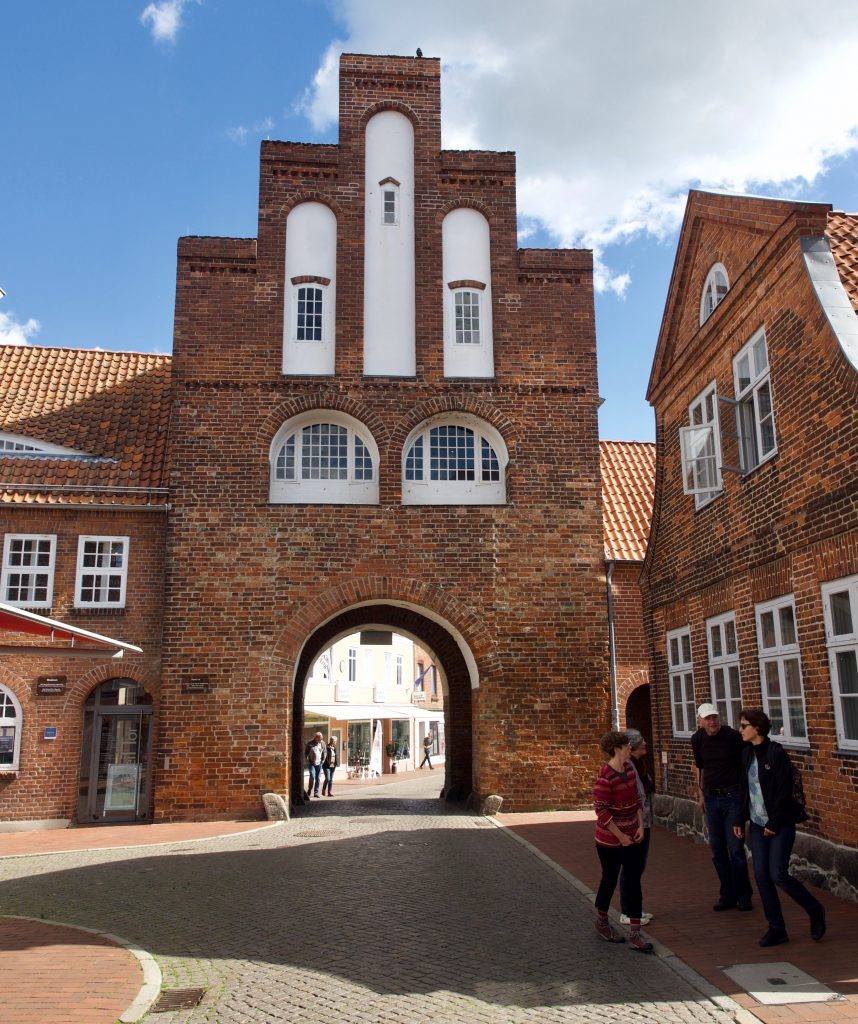
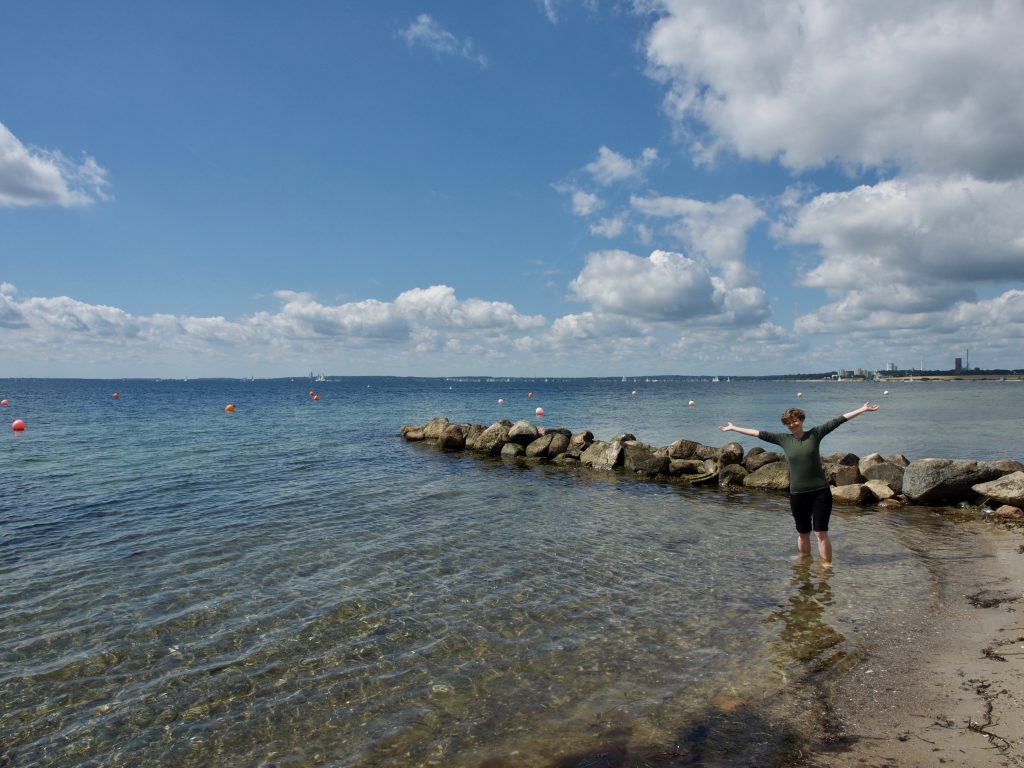
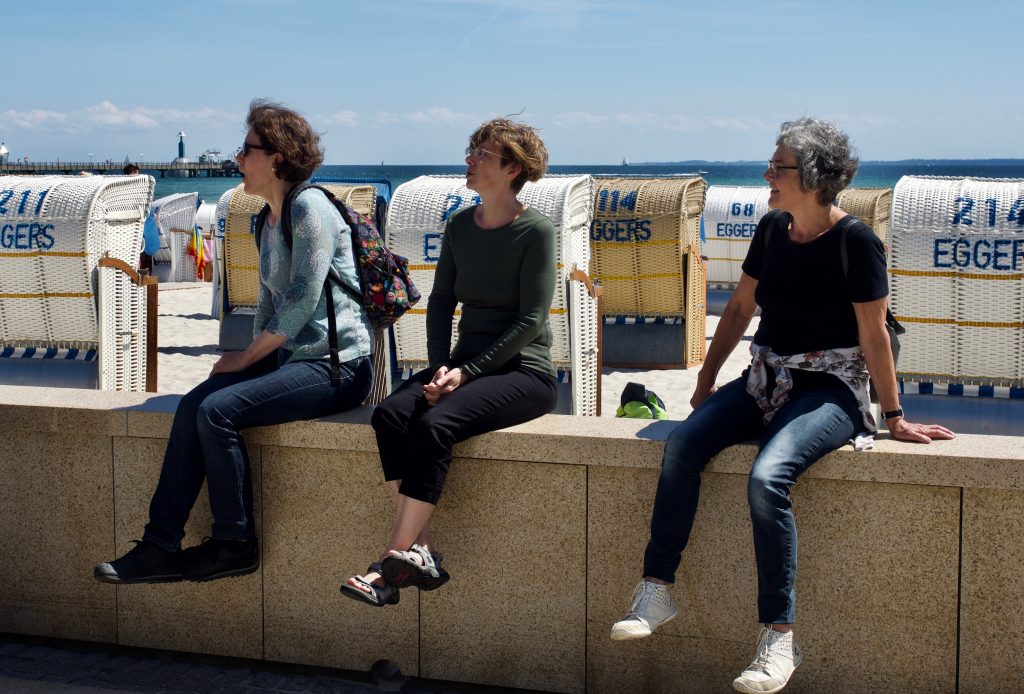
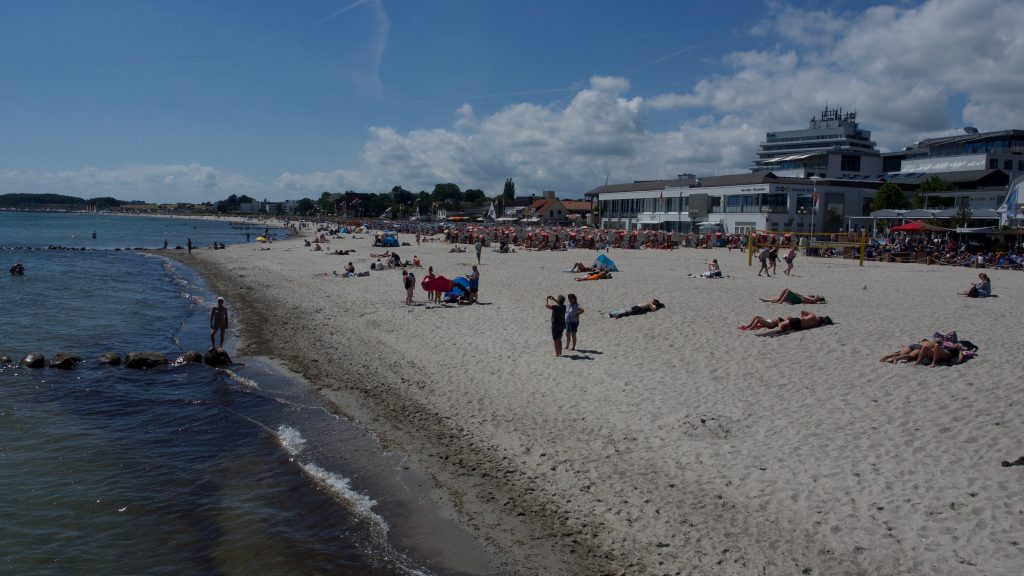
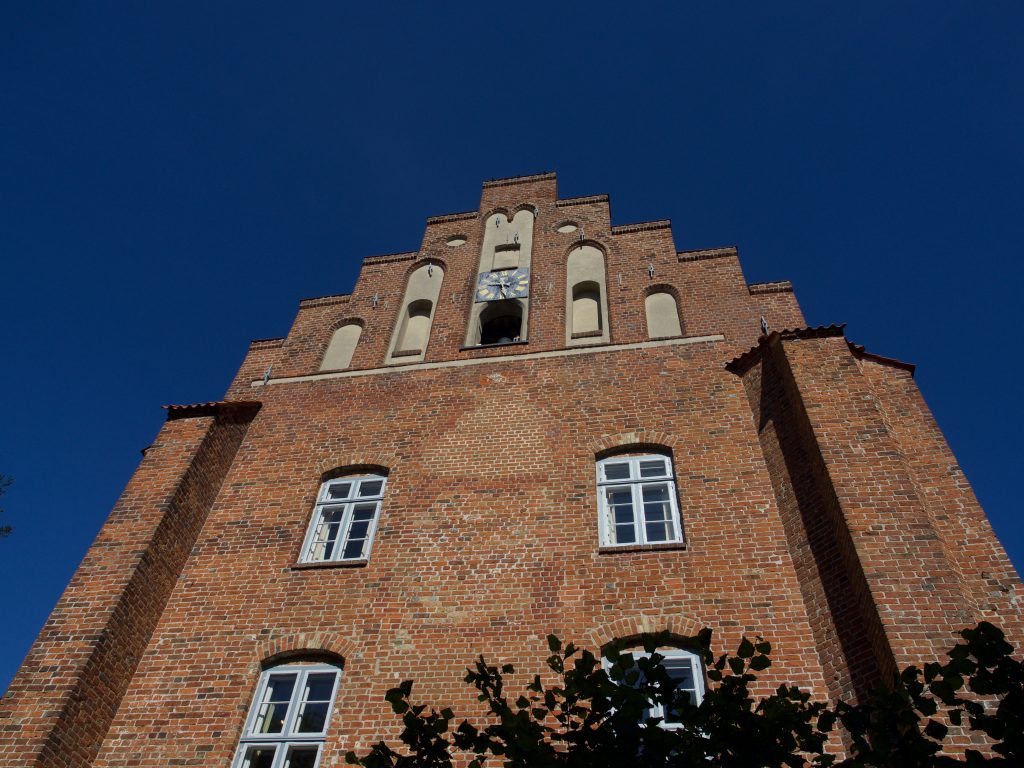
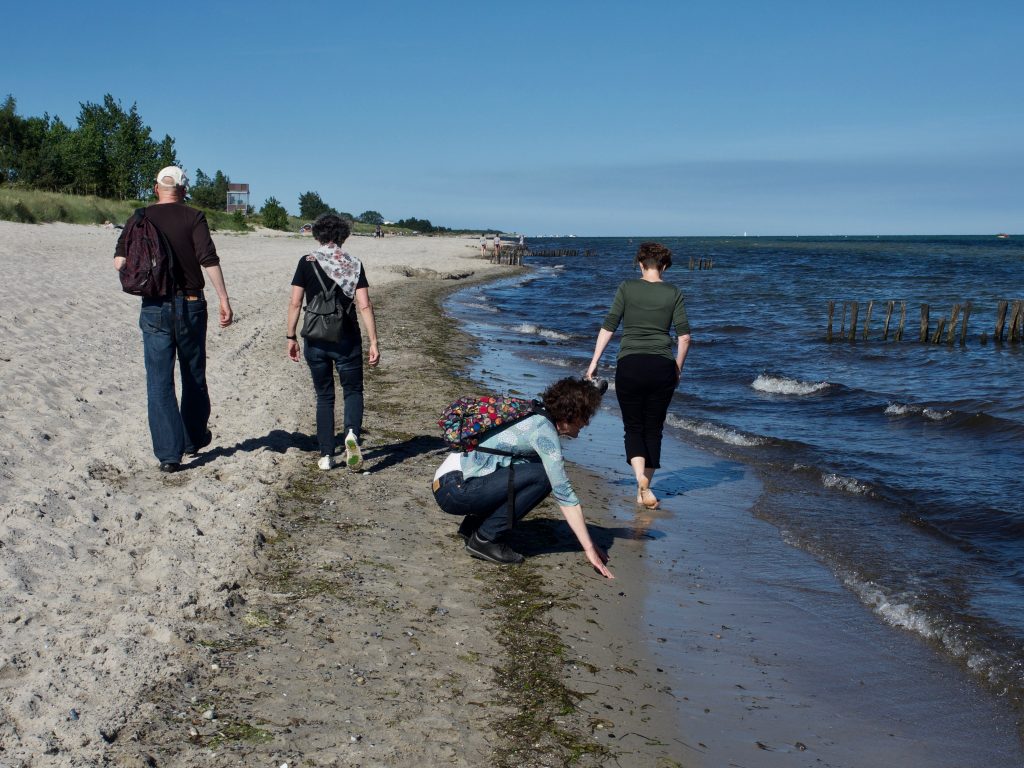
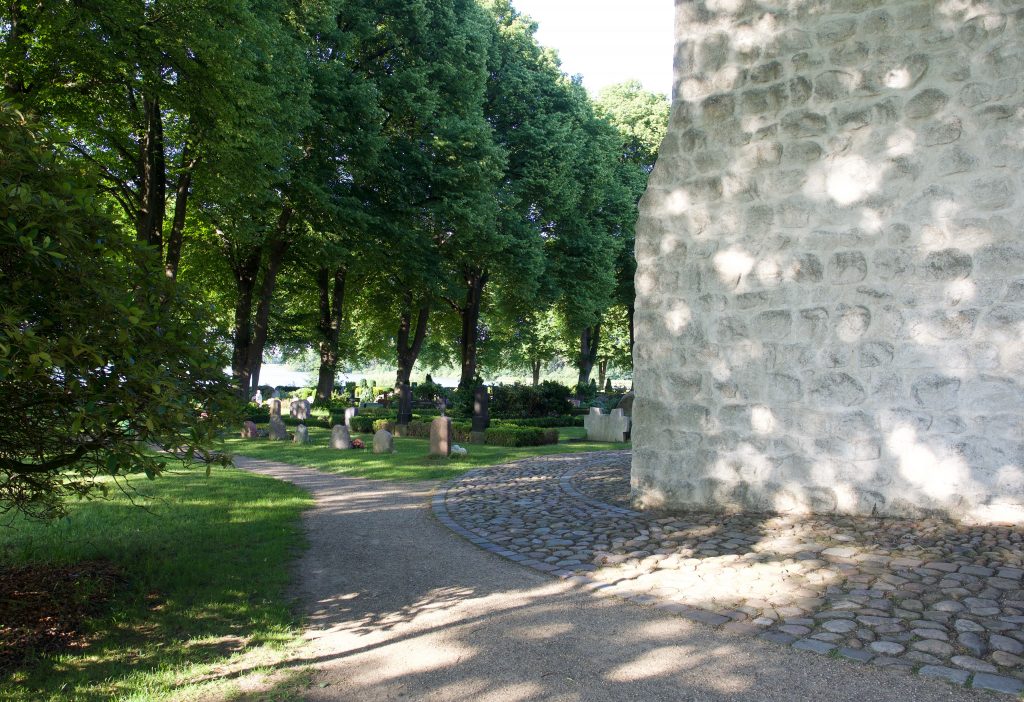
We had a full day of seaside / coastal adventures today. We started with a delicious breakfast that included a huge bag of freshly-baked and -bought rolls that Judith and Michael brought over after their night at the Zen center (they gave us their beds). Memorably, they included raisin buns that were really just camouflaged slices of pound cake, and just delicious. Then we took off for the Baltic coastline, which from my sister‘s place is about an hour pretty much straight East. We started at a lovely seaside/harbor town called Neustadt, where we were able to walk along the only beach in all of this Baltic coastline that is oriented toward the south (it is in a bay, so we looked across at the Northern coastline of the bay, where a more popular resort town named Travemünde is located. Even though the day started out chilly, the sun soon made it lovely (but not quite summery, which was fine with us), and we enjoyed our walk along the beach and the path alongside it, past kiosks and campgrounds. I finally got to stick my feet in ocean water (an important ritual) and it wasn‘t even that cold. The only grim and saddening moment was that in the midst of this, there is a memorial and a marker reminding everyone of a notorious Nazi cruelty that happened right here off the coastline. The Cap Arcona and a sister ship, both massive freighters, were loaded to the gills with prisoners from concentration camps by the SS near the end of the war, basically intended to die a miserable death by way of Allied bombs dropped on apparent freighters. But the Allies „only“ bombed the sister ship, while the Cap Arcona exploded and sank because of that. Between the two ships, 7,000 innocent people died and only a few hundred survived, and all intelligence that could have reached the Allied forces came too late to prevent it. The wrecks were apparently visible far into the 1950s before some of the remains were rescued and a proper memorial was built.
We then walked back into town, and had a lovely dinner in the dock seating of a restaurant with excellent fish and chips and salt herring (Mark, who is not a fish eater, had a Currywurst—famous fast food which is basically a brat with curry ketchup. They gave us way too many French fries, but the food was excellent.
Afterwards, we drove on to another resort town right on the Baltic, by the name of Grömitz, and even though it was a Saturday, and sunny, the number of people walking up and down the promenade or visiting the beach was fairly limited—partly because the summer vacation for schoolkids hasn‘t started yet in this part of Germany, and perhaps partly because right now a big Regatta is happening in nearby Kiel and draws everyone away. So it was busy, but not crowded, and we walked out to the pier (where they had a so-called diving balloon or diving gondola, which takes a whole bunch of people down to the sea floor to see the fish and wheels and what not. It looked interesting, but we refrained. Instead, we had gelato at one of the endless kiosks along the promenade, and admired the array of precisely arranged and labeled beach baskets that are for rent all along this stretch of beach. But we didn‘t go down to the waterfront because there is a beach tax (Kurtaxe) given all this build-up.
Instead, we drove on to see a former monastery, Cismar, with its enormous Gothic brick church from the 1300s, in which only the apse and a tiny portion of the nave are used as church space anymore, whereas the rest is a contemporary art exhibit space, with the cloister harboring a cafe where we imbibed some much-needed caffeine (coffee for three of us, and coke for the other two). It was surprisingly busy here, because they basically had an open house that afternoon that was just getting underway. I was surprised to learn that the monastery had a huge area of villages that was under its control in the Middle Ages, when a surge in pilgrimages after the crusades brought all kinds of pilgrim „tourism“ to this particular church, which was supposed to have the blood of St. John (the baptist or the evangelist; I don‘t remember) as a „blood relic.“ Even though that was later declared a forgery and the pilgrims turned elsewhere, this monastery and many others in the area were very crucial for Christianizing the very north of Germany (basically Viking country) and for dotting the landscape with churches and monasteries, most founded between 1200 and 1400.
But we continued to a much quieter third beach, for the contrast with the groomed Gromitz, and walked along its white-sand beach (me with my feet in the water, of course) for just a little bit longer. Then we drove home, not without catching one more of these very old churches. This one, in Borsau, had a totally picturesque cemetery right by the side of a huge lake, the Plönsee. I‘m not sure why having a view when you order your gravestone is of any relevance, but it‘s clearly a popular cemetery and a nice little church with a Romanesque core.
Then we finally did drive all the way home; we‘d been toddling around the area for over 10 hours, and it was time to have a little dinner (rolls and such as before) and then just hang out, talk, and look at some of our photos from the Italy trip. We didn‘t wrap up until almost 11 when it slowly began to actually get dark.